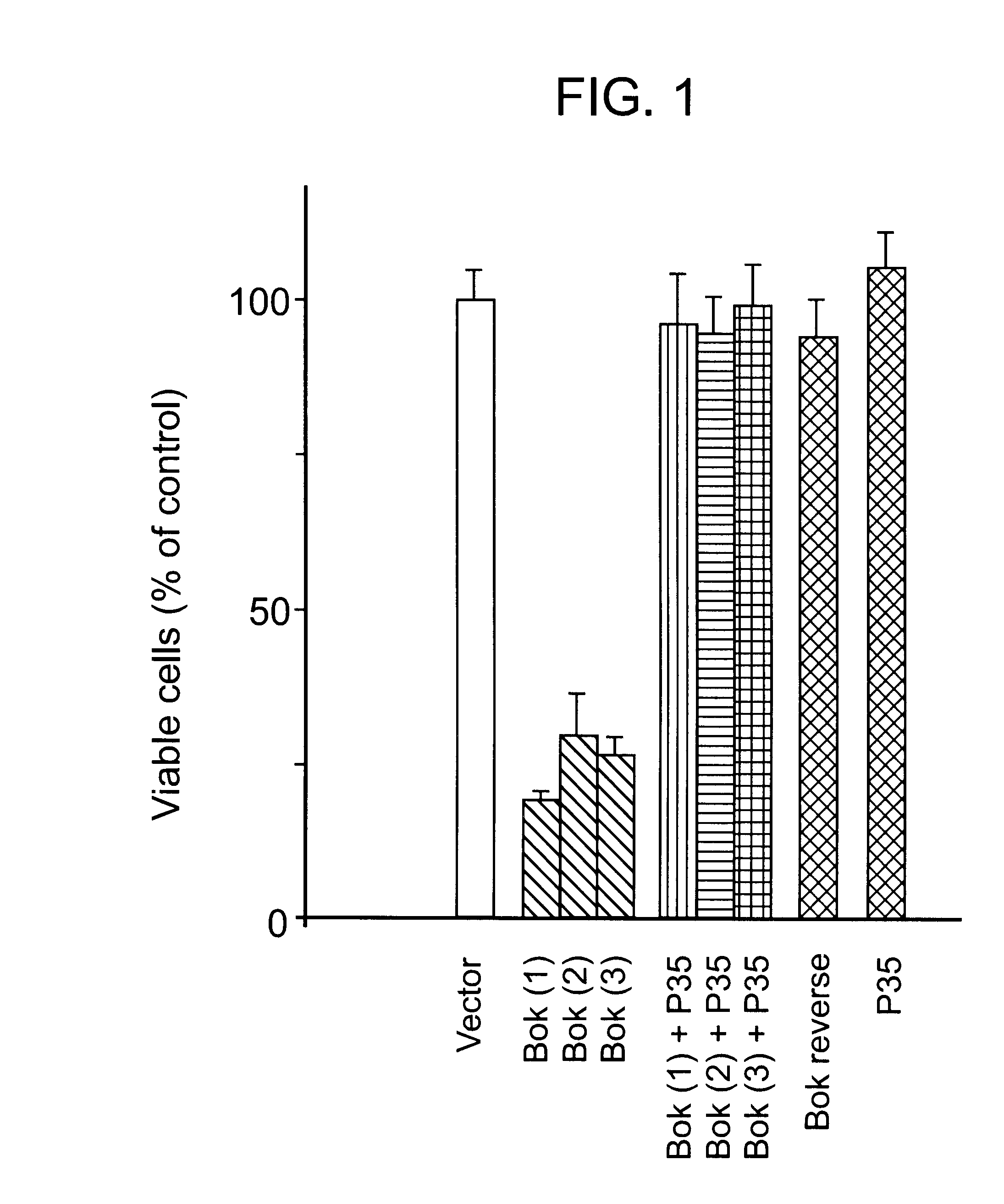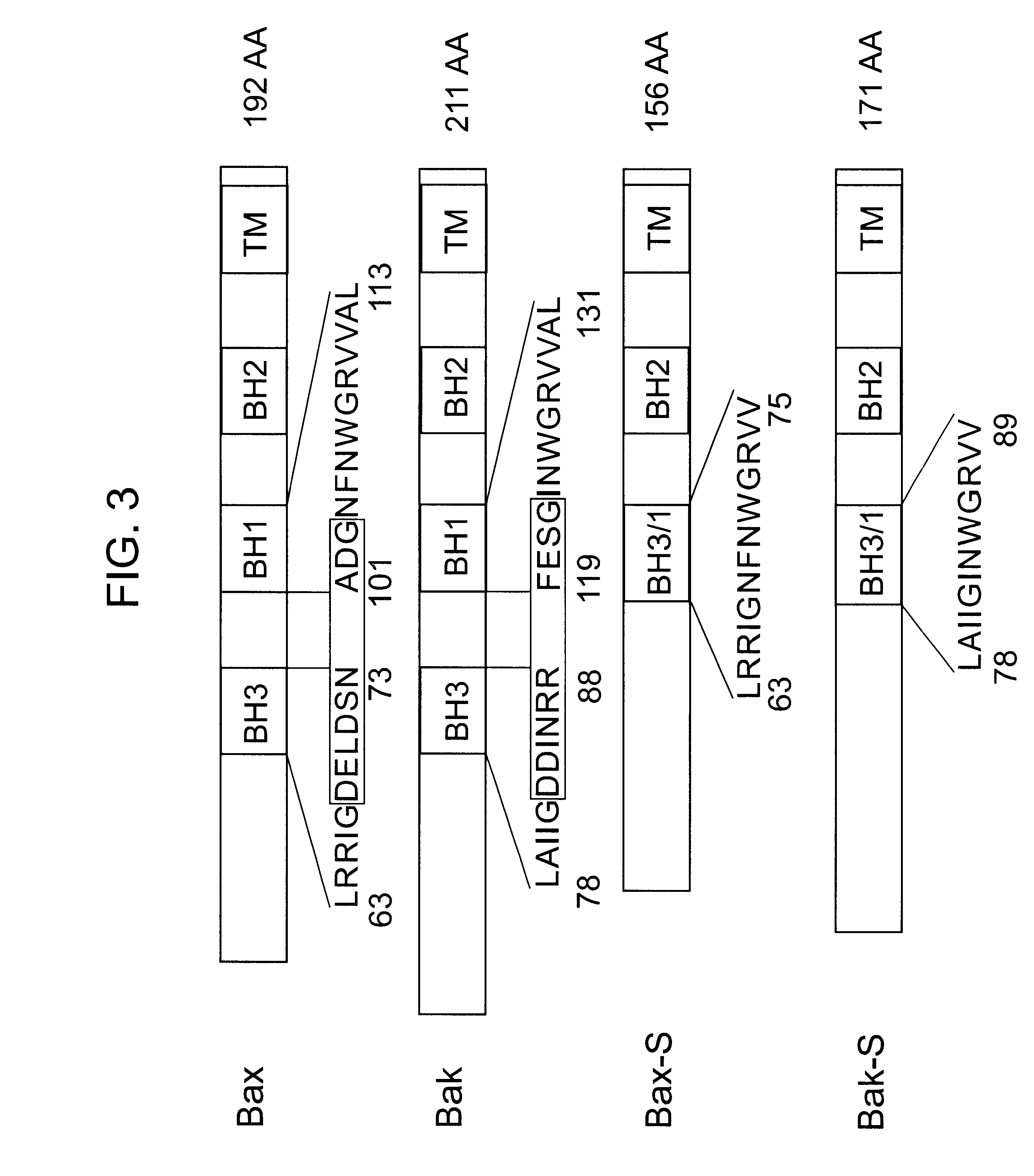Mammalian pro-apoptotic Bok genes and their uses
a technology of pro-apoptotic bok genes and genes, applied in the field of mammalian pro-apoptotic bok genes, can solve the problem that the anti-apoptotic effect of bcl-2 is not universal
- Summary
- Abstract
- Description
- Claims
- Application Information
AI Technical Summary
Problems solved by technology
Method used
Image
Examples
example 1
Isolation and Characterization of Bok cDNA
Materials and Methods
Two-hybrid screening. The full-length open reading frame (ORF) of rat Mcl-1 cDNA was fused in frame with the GAL4-binding domain (GAL4-BD) into the pGBT-9 yeast shuttle vector (Clontech, Palo Alto,. Calif.). This vector was used to identify Mcl-1-interacting proteins by screening 1.5 million transformants from a GAL4-activation domain (AD)-tagged ovarian fusion Matchmaker cDNA library. The ovarian cDNAs were prepared from 27-day-old Sprague-Dawley rats primed for 36 h with 10 IU equine gonadotropin. Yeast cells were first transformed with pGBT9-Mcl-1 and colonies selected in plates deficient for tryptophan. In the second step, cells were transformed with cDNAs from the ovarian library before selection of clones in plates lacking tryptophan, leucine and histidine. Positive transformants were further selected for growth in media containing 5 mM 3-aminotriazole. Individual AD-fusion cDNAs were retrieved following transforma...
example 2
Characterization of a Bok Splicing Variant with a Truncated BH3 Domain, which Induces Apoptosis but does not Dimerize with Anti-apoptotic Bcl-2 Proteins in vitro
A Bok splicing variant is identified in which the region encoded by exon three is absent, creating a truncated short form (Bok-S) of the full-length Bok protein (Bok-L). The skipping of exon three maintains the original reading frame and retains the BH2 and the C-terminal membrane anchoring domains; however, parts of the BH3 and BH1 domains were deleted. Functional analysis indicated that Bok-S is still capable of inducing apoptosis. The truncated Bok has lost its ability to heterodimerize with Mcl-1, BHRF-1 and Bfl-1, suggesting that the proapoptotic activity of this variant is not mediated by its binding to antiapoptotic Bcl-2 proteins.
Materials and Methods
Reverse transcription-PCR of the Bok-S transcript. Total RNA from different tissues was isolated from 27-day-old Sprague-Dawley rats using an anion exchange resin chroma...
PUM
| Property | Measurement | Unit |
|---|---|---|
| temperature | aaaaa | aaaaa |
| temperature | aaaaa | aaaaa |
| concentration | aaaaa | aaaaa |
Abstract
Description
Claims
Application Information
 Login to View More
Login to View More - R&D
- Intellectual Property
- Life Sciences
- Materials
- Tech Scout
- Unparalleled Data Quality
- Higher Quality Content
- 60% Fewer Hallucinations
Browse by: Latest US Patents, China's latest patents, Technical Efficacy Thesaurus, Application Domain, Technology Topic, Popular Technical Reports.
© 2025 PatSnap. All rights reserved.Legal|Privacy policy|Modern Slavery Act Transparency Statement|Sitemap|About US| Contact US: help@patsnap.com



